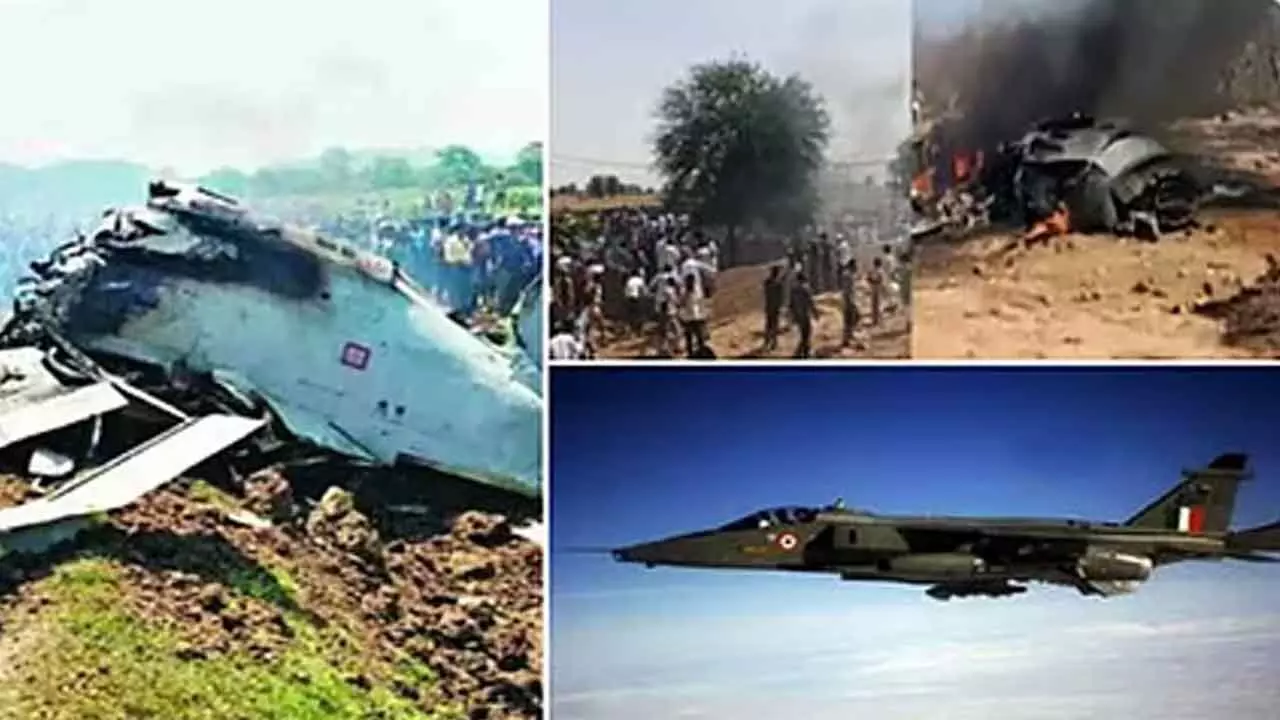Tragic Loss: Two Pilots Die in Third IAF Jaguar Crash Since March
Two IAF pilots tragically died in a Jaguar jet crash in Rajasthan, marking the third such incident since March. Learn about the challenges facing India's aging Jaguar fleet and the IAF's modernization plans.
Tragic Loss: Two Pilots Die in Third IAF Jaguar Crash Since March

A pall of grief has fallen over the Indian Air Force (IAF) after a Jaguar trainer aircraft crashed in Rajasthan on Wednesday, claiming the lives of two pilots. This devastating incident marks the third Jaguar jet crash for the IAF since March of this year, raising concerns about the aging fleet.
The ill-fated aircraft was on a routine training mission near Churu when it went down around 12:30 PM, according to Churu Superintendent of Police Jai Yadav. The IAF swiftly issued a statement confirming the tragedy: “Both pilots sustained fatal injuries in the accident. No damage to any civil property has been reported.” A court of inquiry has been ordered to ascertain the precise cause of the crash.
The IAF identified the fallen air warriors as Squadron Leader Lokender and Flight Lieutenant Rishi Raj Singh. Local reports suggest the aircraft was flying at a low altitude when it crashed near Bhavana Badavane village.
The Perils of Low-Level Flying and an Aging Fleet
Defence officials highlighted the inherent dangers of low-level sorties, where aircraft fly at 150 meters or less from the ground. Such missions are particularly susceptible to bird hits or unforeseen obstructions like mobile towers and windmills, adding a layer of complexity to already demanding operations.
This latest incident follows two other Jaguar crashes in quick succession:
♦ March 7: A Jaguar crashed near Panchkula, Haryana, shortly after taking off from the Ambala air base. Fortunately, the pilot safely ejected.
♦ April 2: Another Jaguar went down near Jamnagar, Gujarat, tragically killing one pilot and seriously injuring another.
The End of an Era: India's Aging Jaguars
The Anglo-French origin Jaguar is one of the oldest fighter jets in the IAF's inventory. These twin-engine, single-seater deep-penetration strike aircraft, capable of speeds up to 1,350 kmph, first joined the IAF on July 26, 1979. Currently, the IAF operates six squadrons of these venerable jets.
Despite plans in 2010 to upgrade the Jaguar fleet's engines, the prohibitively high costs quoted by Honeywell and Hindustan Aeronautics Limited forced the IAF to shelve the initiative. Consequently, these aircraft continue to be powered by their legacy Adour Mk 811 engines.
While engine upgrades have stalled, the IAF has been investing in avionics upgrades, such as the latest DARIN III system, to enhance the Jaguars’ navigation and mission capabilities and extend their operational life.
However, these upgrades cannot fully compensate for the jets' old airframes and outdated engines. The IAF acknowledges the limitations and plans to gradually phase out the aging Jaguar fleet by 2035, with the process expected to begin in the latter half of this decade. This strategic move aligns with the IAF’s ambition to induct modern aircraft, including the indigenous Light Combat Aircraft Tejas and the Advanced Medium Combat Aircraft.
Many other nations, including France, the UK, Nigeria, and Oman, have already retired their Jaguar fleets, underscoring the global trend towards more advanced aerial platforms.

